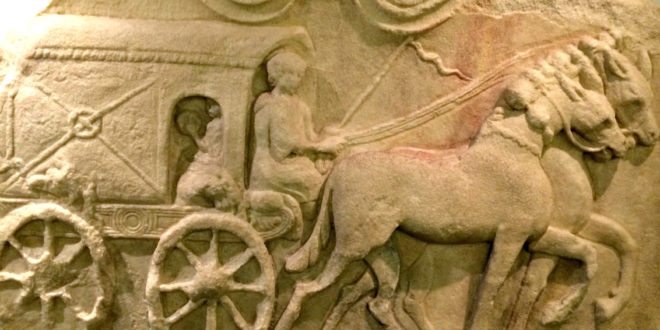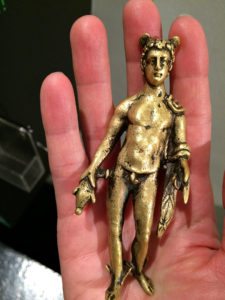 If you know about Roman Vienna you will understand us better. 400 years of Vienna being a Roman town left their mark. Our lovely vineyards in the outskirts and our winery culture date back to the Romans. They loved the warm sulphur springs in the Vienna Woods and set up spas there. Carnuntum in the east of Vienna is a well preserved Roman town. It has been loved by generations of Latin teachers and their pupils.
If you know about Roman Vienna you will understand us better. 400 years of Vienna being a Roman town left their mark. Our lovely vineyards in the outskirts and our winery culture date back to the Romans. They loved the warm sulphur springs in the Vienna Woods and set up spas there. Carnuntum in the east of Vienna is a well preserved Roman town. It has been loved by generations of Latin teachers and their pupils.
Even today, locals unearth archeological finds on their very own soil: My brother-in-law’s cousin owns a vineyard in the Vienna Woods and has found a couple of Roman coins between his vines in the past.
How Roman Vienna Was Created
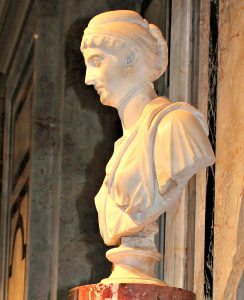 Roman Vienna. Vindobona, as Vienna was first called, was set up in the first century AD as a military camp. The location was right in the city centre (see photo). The adjacent Roman town was located in what is today the third district. (You will arrive there if you take the CAT train from the airport to Vienna.) At some point, Vindobona counted more than 30,000 inhabitants from all parts of the Roman Empire.
Roman Vienna. Vindobona, as Vienna was first called, was set up in the first century AD as a military camp. The location was right in the city centre (see photo). The adjacent Roman town was located in what is today the third district. (You will arrive there if you take the CAT train from the airport to Vienna.) At some point, Vindobona counted more than 30,000 inhabitants from all parts of the Roman Empire.
To be fair, the creation of Vindobona was not breaking news. Vienna was just one of many little towns in the Empire. The capital of the Roman province Pannonia was located in Carnuntum, around 20 km downstream the Danube.
Where To Find Roman Vienna Today
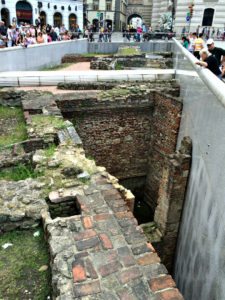 Roman Vienna. In the middle of Michaelerplatz, close to the Spanish Riding School Vienna and the Imperial Palace (Hofburg), you can see excavations of Roman Vienna. The square had been a Roman junction of streets. The bases of Roman houses can be seen underneath.
Roman Vienna. In the middle of Michaelerplatz, close to the Spanish Riding School Vienna and the Imperial Palace (Hofburg), you can see excavations of Roman Vienna. The square had been a Roman junction of streets. The bases of Roman houses can be seen underneath.
Kohlmarkt, one of the main Vienna shopping boulevards, was thought to have been one of the main streets that the amber merchants took on their way to the South of Europe. Graben boulevard still takes its name from a Roman ditch there.
Roman Emperor Marcus Aurelius died in Vindobona in 180 AD. There is still a Mark Aurel Strasse close to Hoher Markt in Vienna which is thought to have been near the Emperor’s accommodation. In the fifth century AD, Vindobona was sacked several times by Germanic tribes. Finally, the Romans left the town and camp in the 5th century AD.
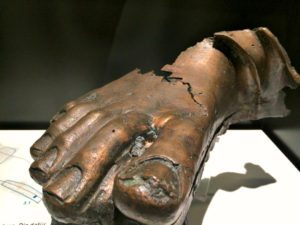 The most comprehensive exhibition of Roman finds in Vienna can be seen at the Roman Museum (Römermuseum) on Hoher Markt in the city centre. The small museum hosts a fine selection of Roman reliefs, pottery, jewelry, as well as elements of original thermae. The Museum of Fine Arts (Kunsthistorisches Museum) has a fine Antiques collection of Roman and Greek objects, such as the Roman bust in the photo. Many of these objects were part of the Habsburg Emperors art treasures collection.
The most comprehensive exhibition of Roman finds in Vienna can be seen at the Roman Museum (Römermuseum) on Hoher Markt in the city centre. The small museum hosts a fine selection of Roman reliefs, pottery, jewelry, as well as elements of original thermae. The Museum of Fine Arts (Kunsthistorisches Museum) has a fine Antiques collection of Roman and Greek objects, such as the Roman bust in the photo. Many of these objects were part of the Habsburg Emperors art treasures collection.
back to Vienna History
back to Vienna Tourism
back to Vienna Unwrapped homepage
